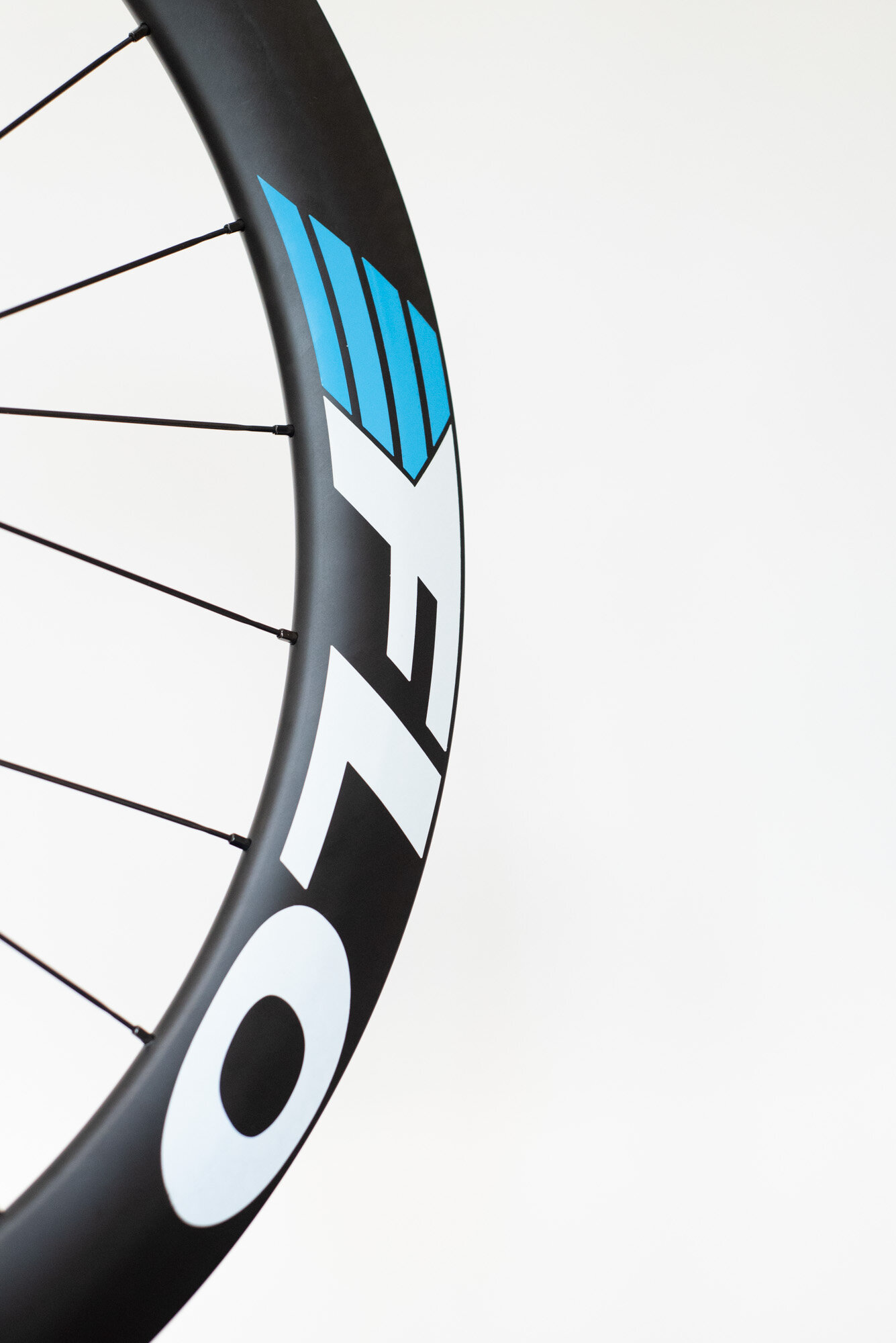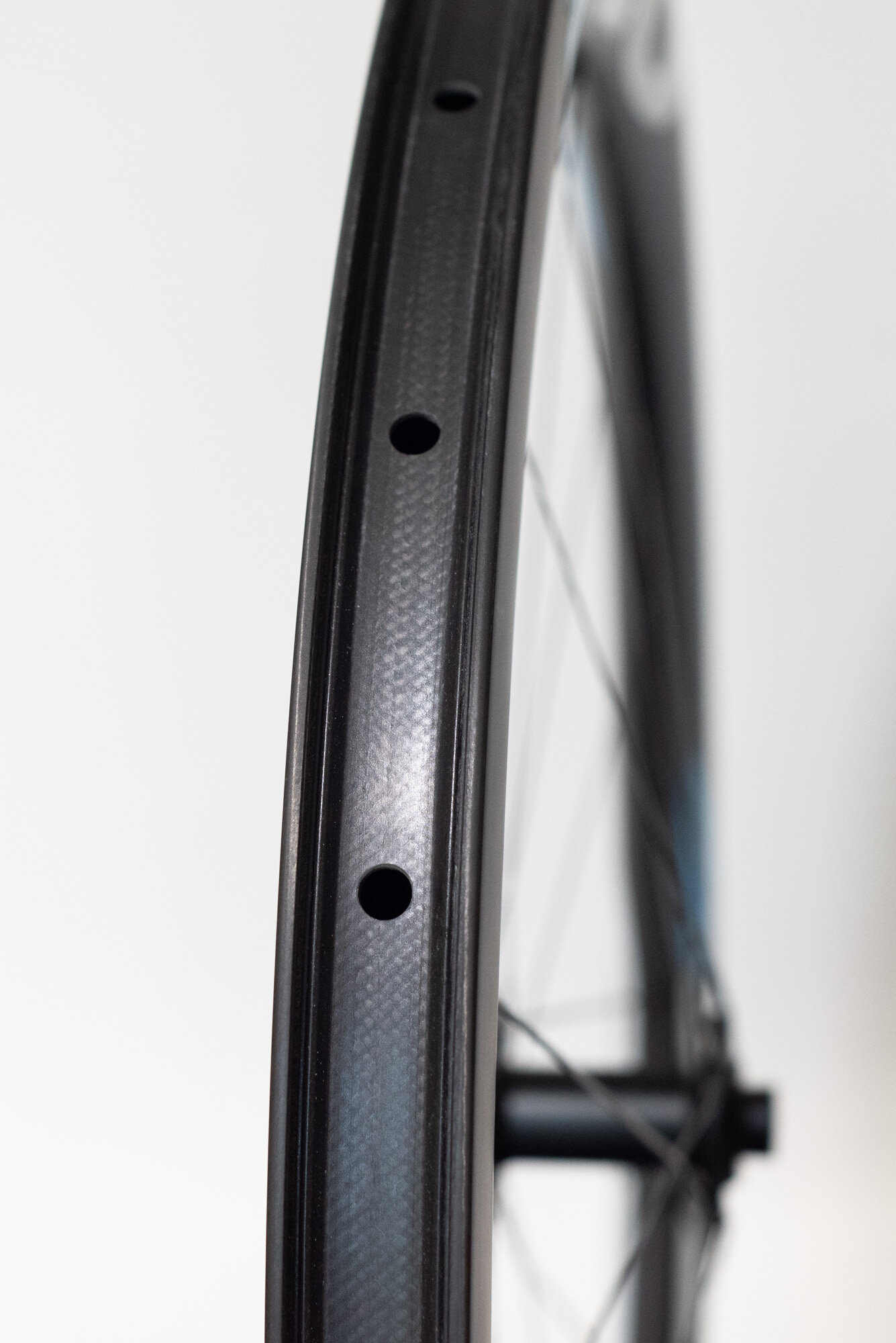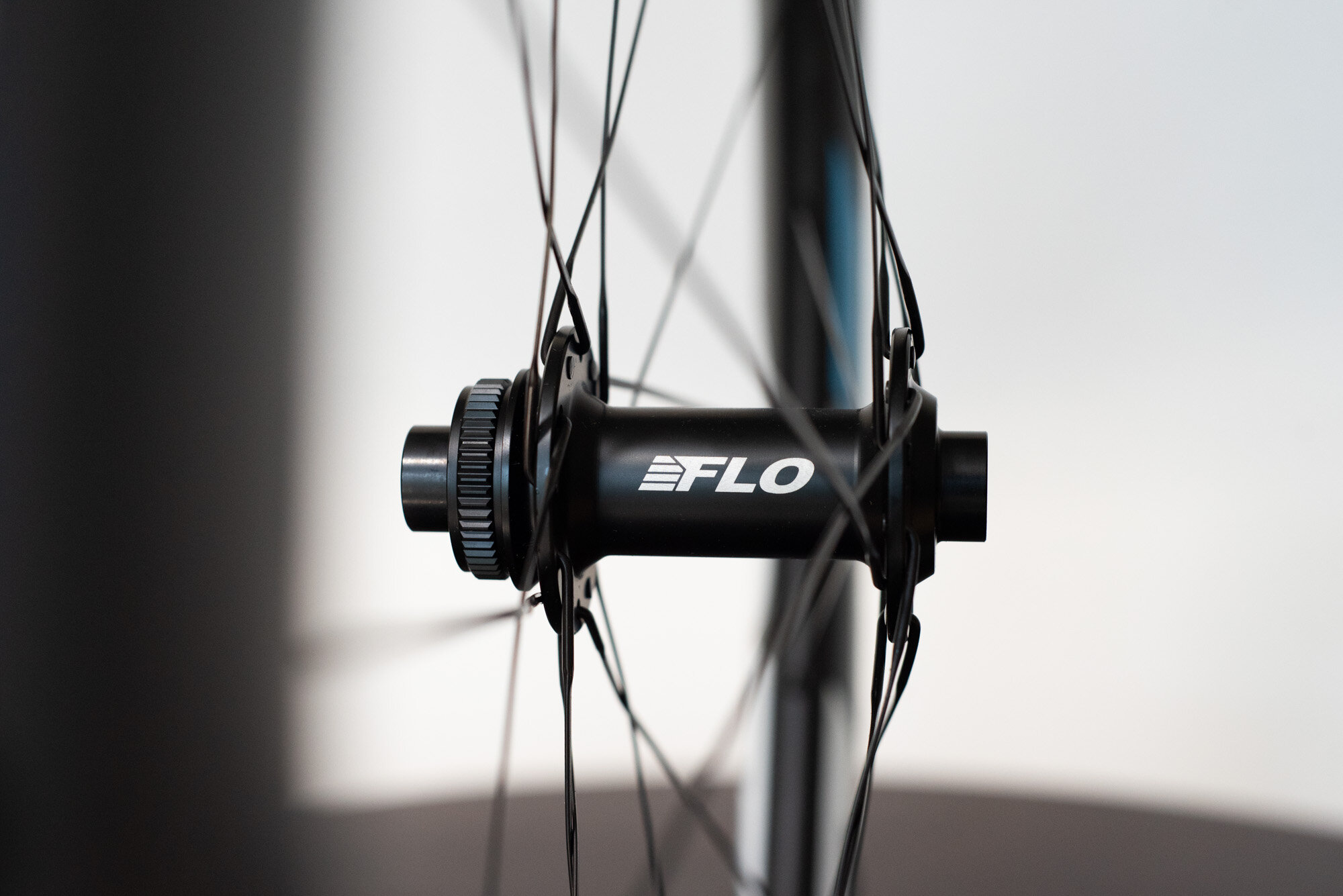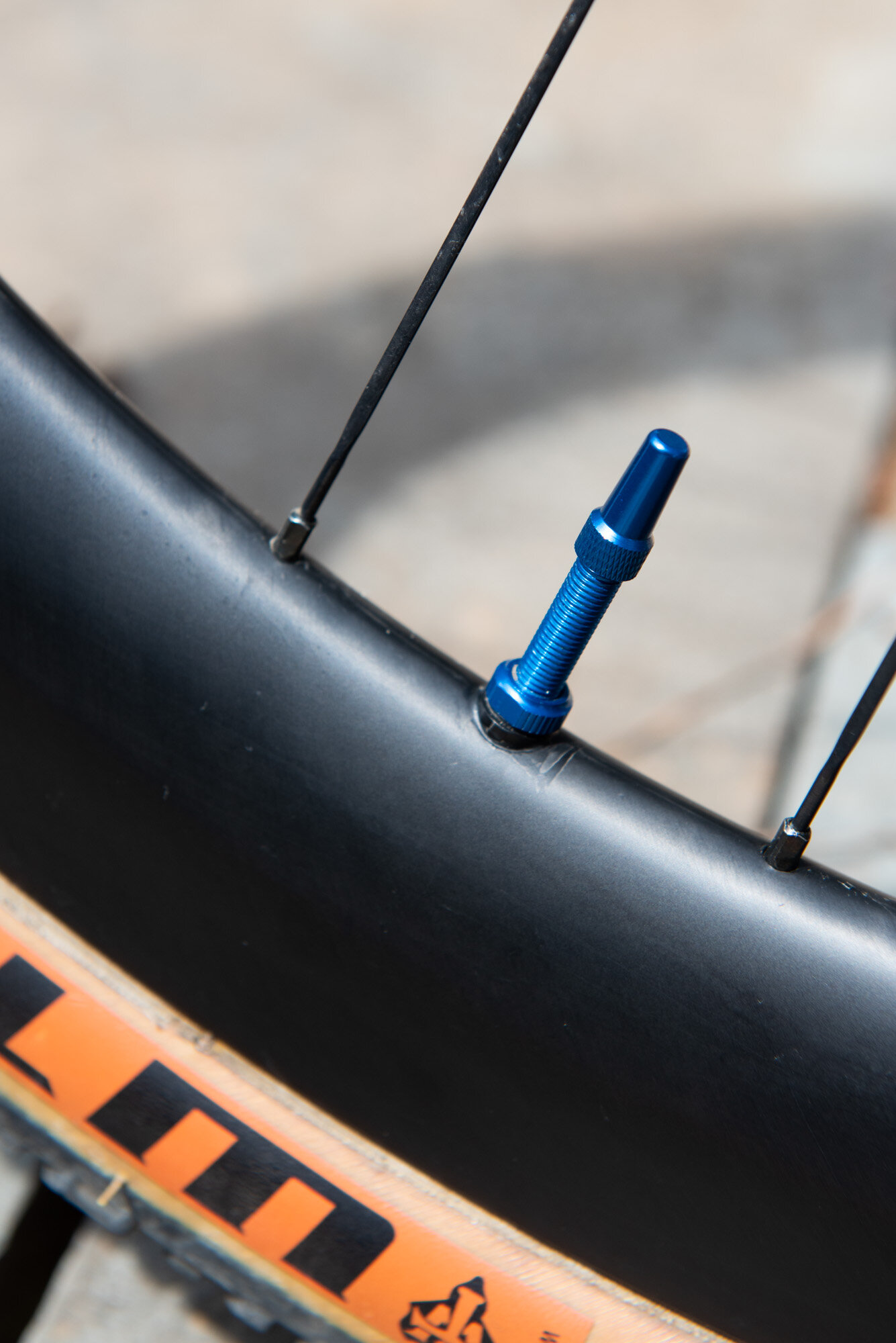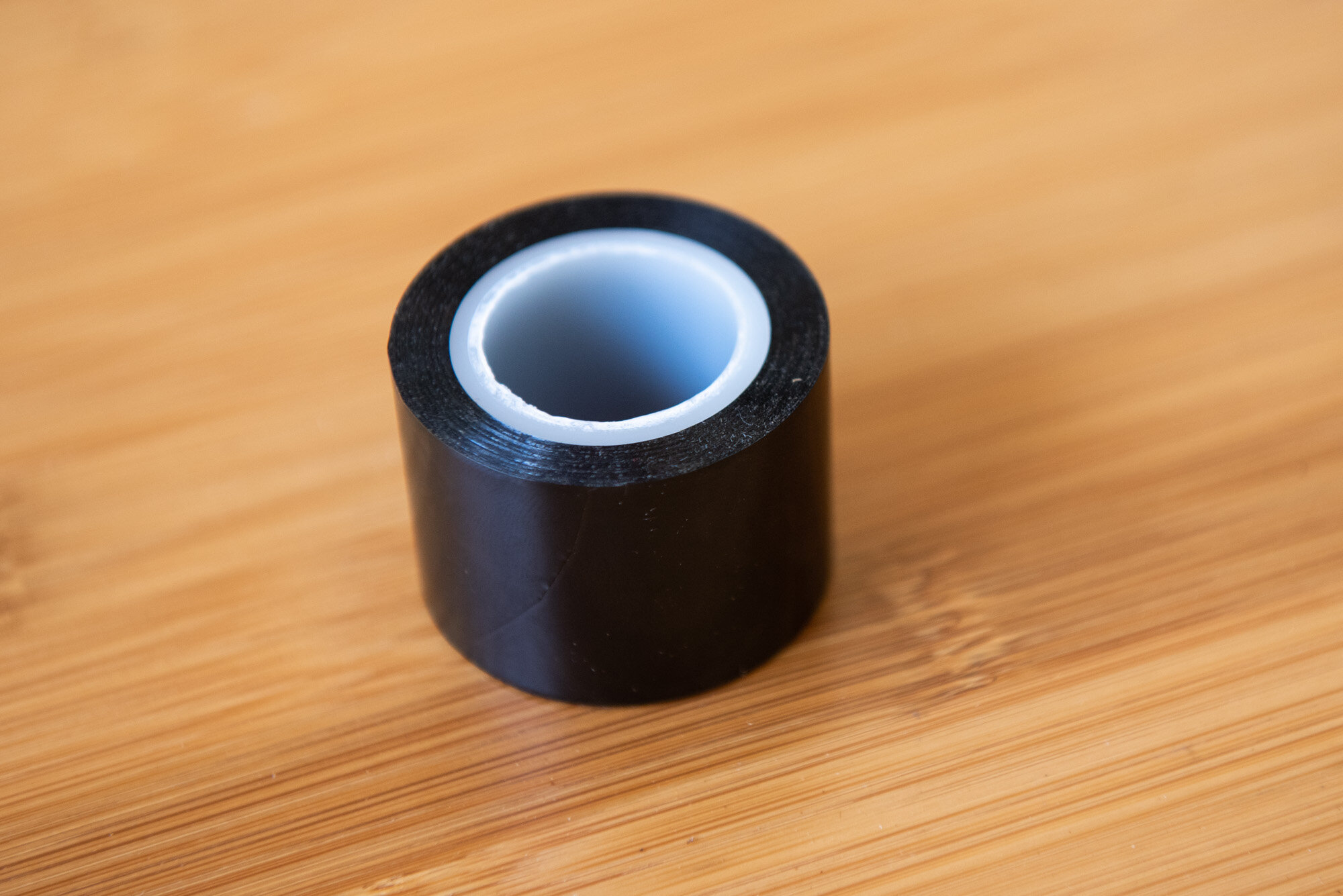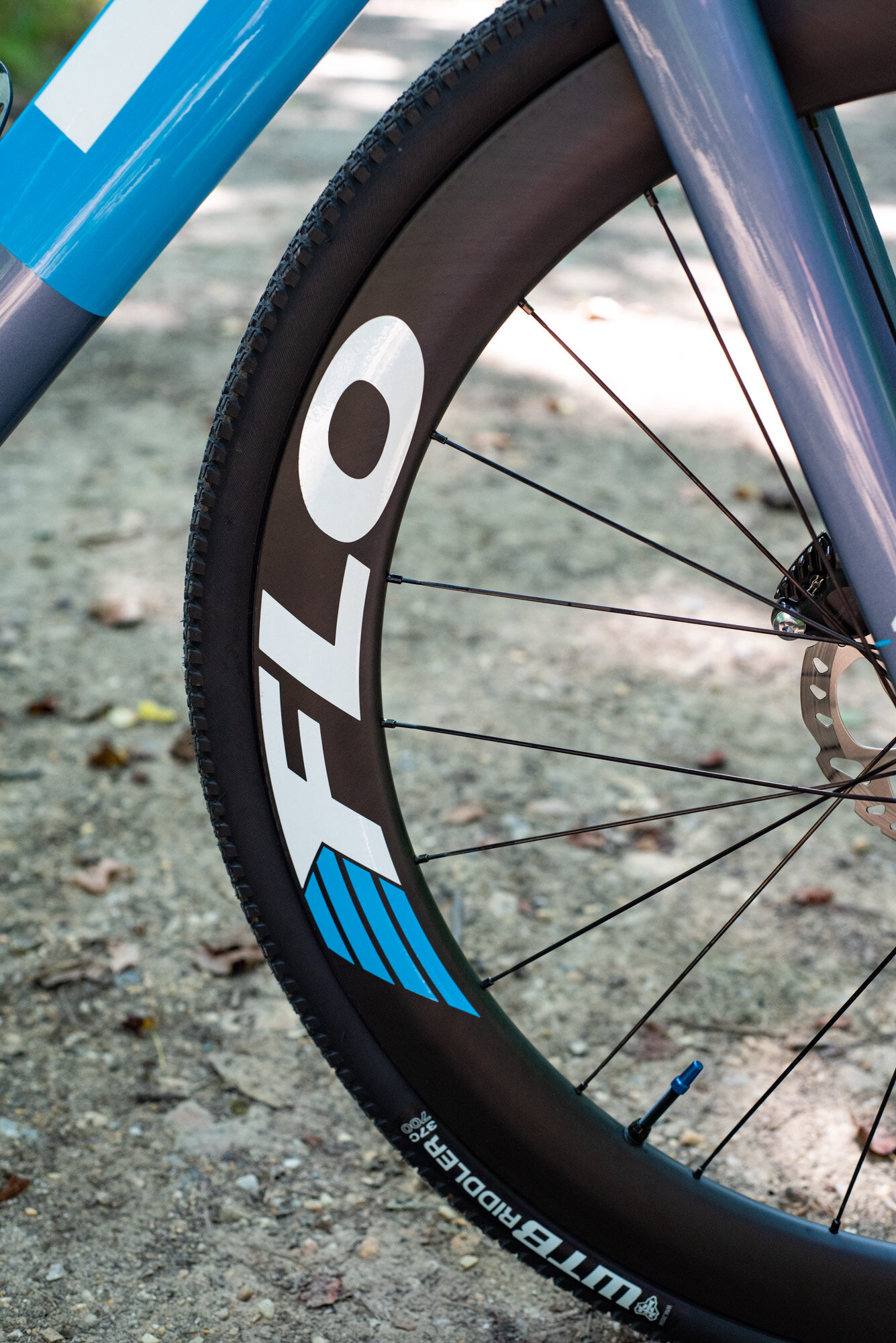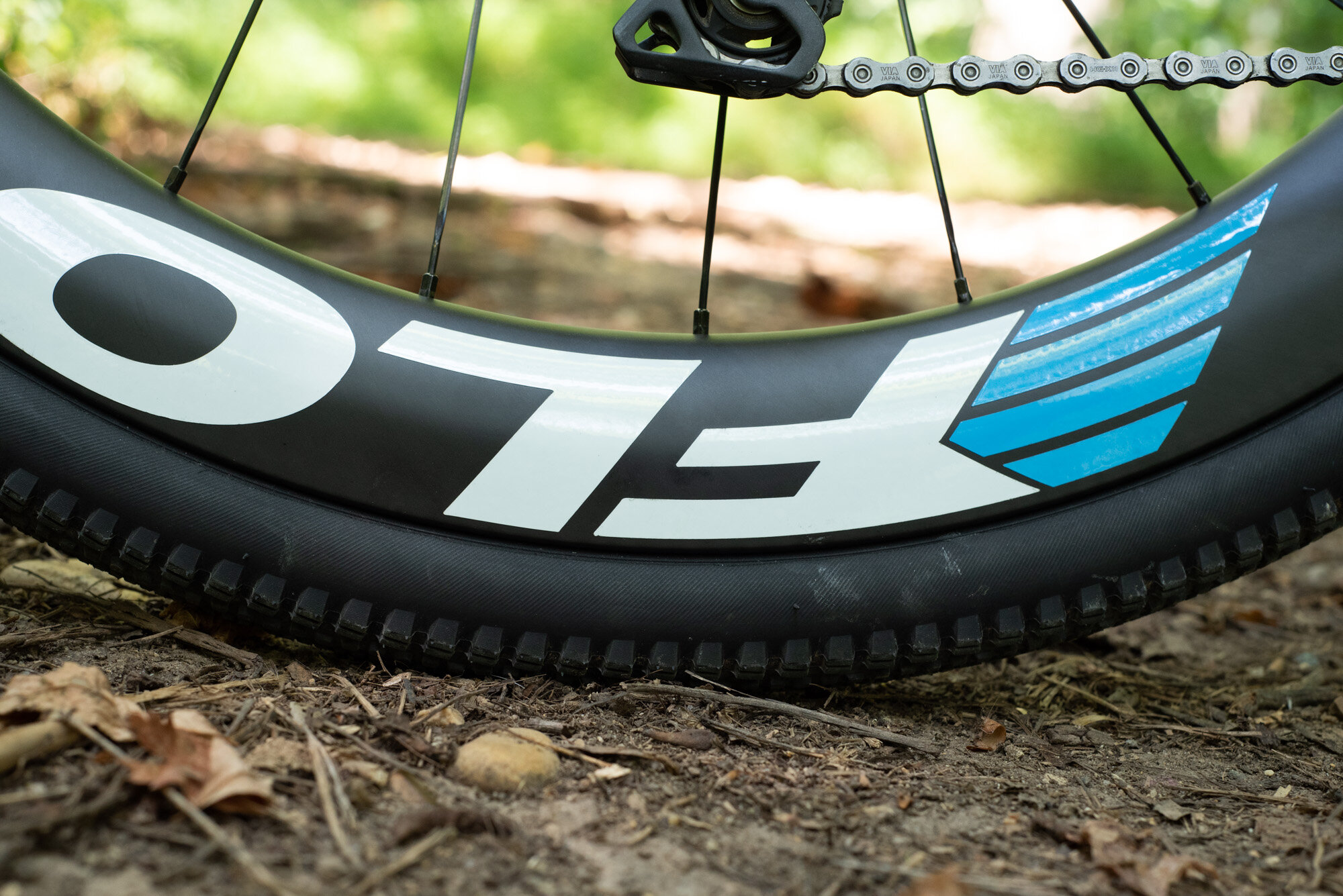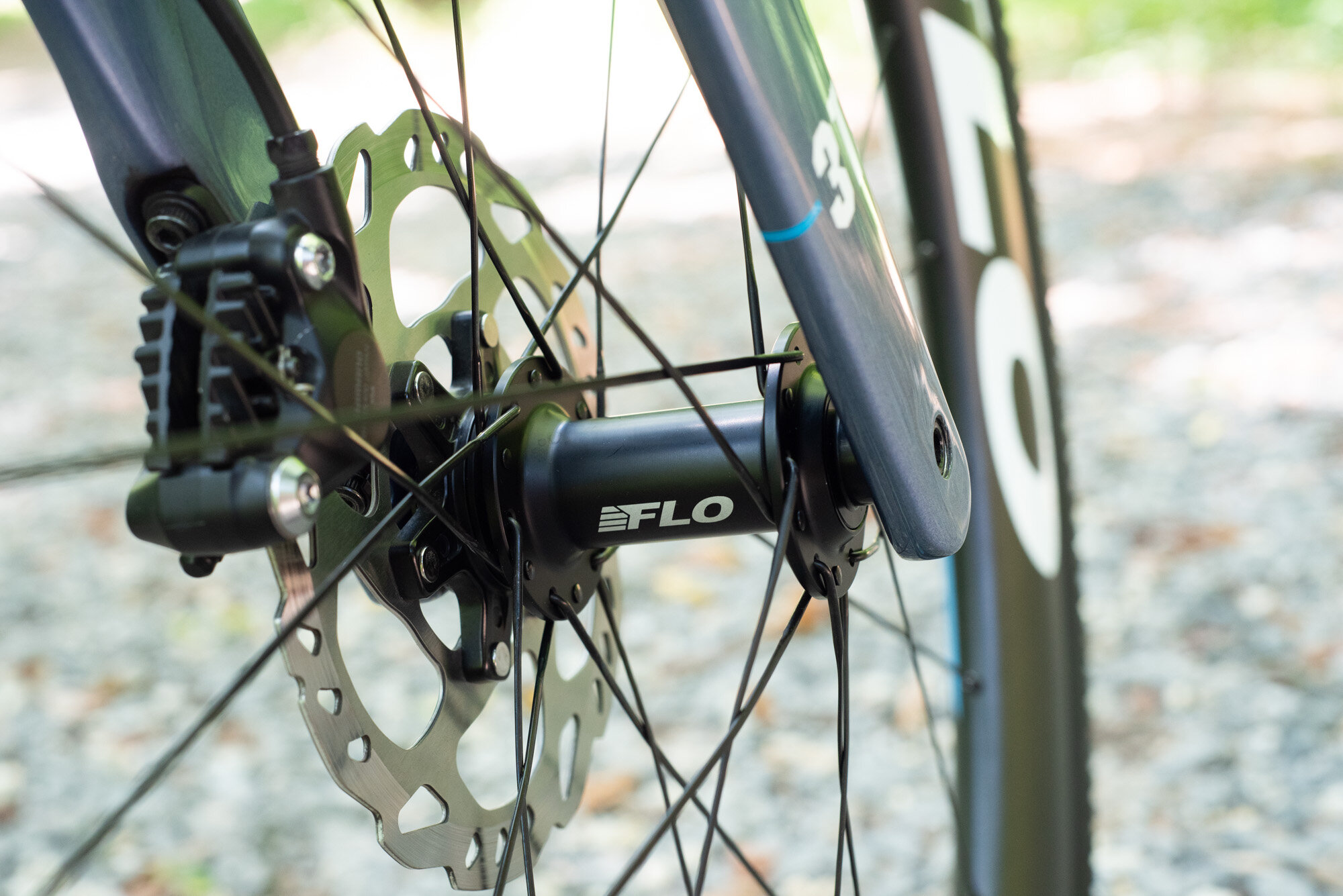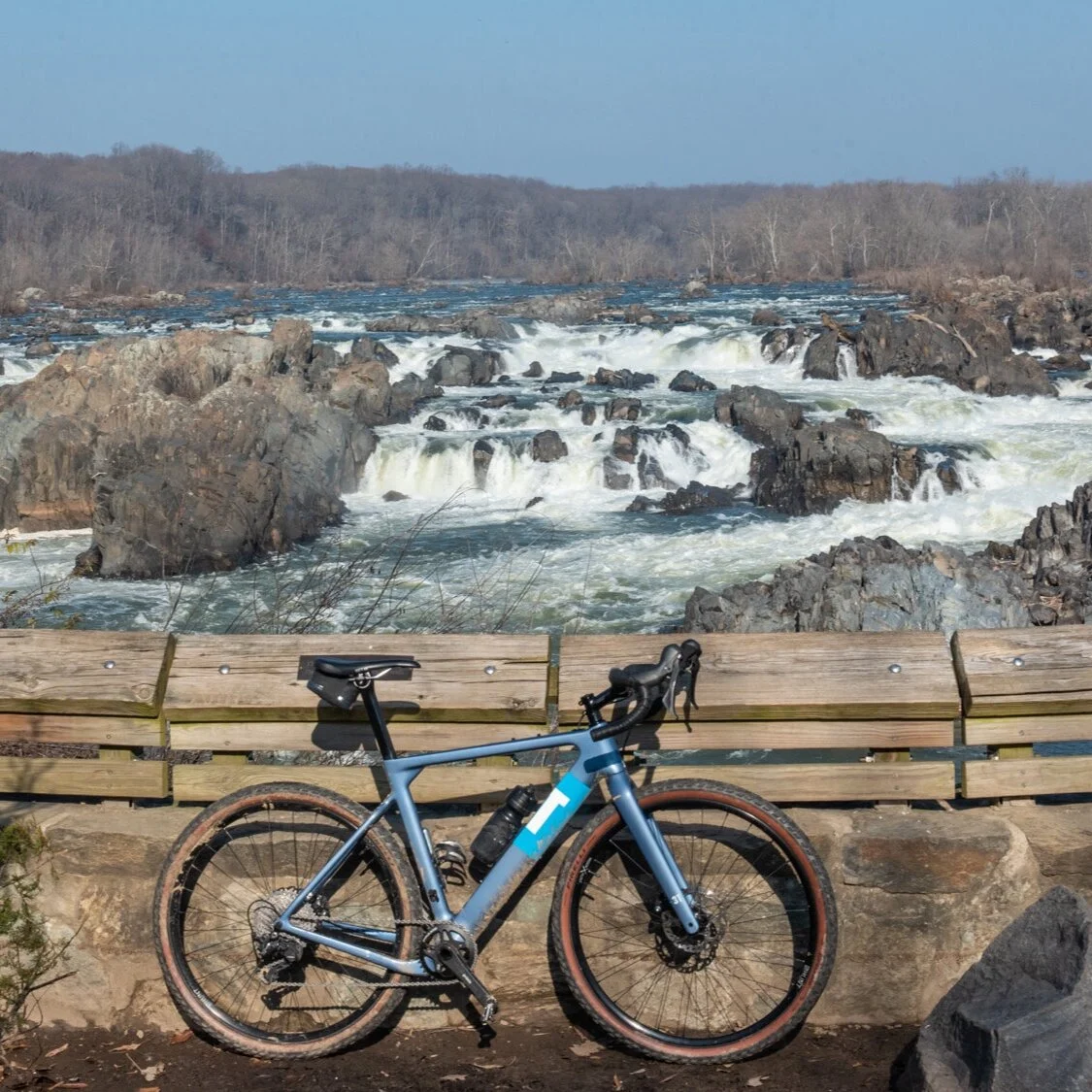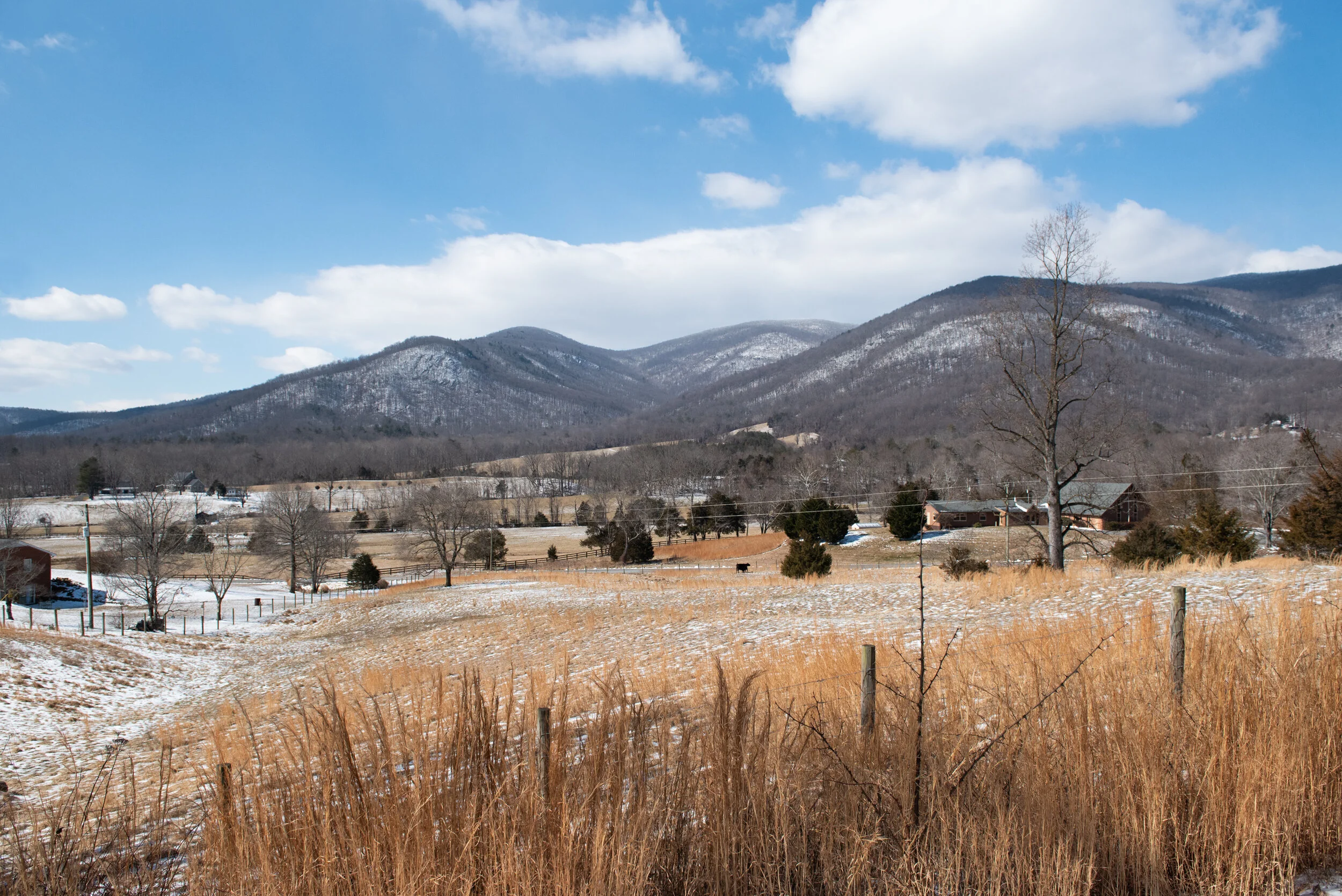FLO G700 Aero Gravel Wheelset Review
Disclaimer: This post contains affiliate links, through which we earn a commission.
Intro
Back when shopping for my first gravel bike, I wondered: Could a gravel bike truly be my one and only bike? I’m talking about true performance all-round, period. One bike that I could confidently take to a road gran fondo, an olympic/sprint triathlon and also a gravel grinder event. It seems like wishful thinking, I know. The problem is that most bike manufacturers would much rather sell you three different bikes, each with a specialist application; an aero road bike for fast road riding, a super sleek TT bike to use at a triathlon and lastly a sturdy (gravel or mountain) bike that you can take on an off-road gravel adventure. I was set on testing out my ambitious idea to see if there really was a bike set-up that could get close to the ultimate all-round performance that I demanded.
The first important component of this puzzle was choosing the correct bike frame. I’m not going to dwell on this too much and instead I’ll refer you to my other blogpost that will explain why I ultimately settled on a 3T Exploro. While incredibly versatile, the 3T Exploro frame on its own can not provide the full all-round performance that I was after. The second, equally important piece of the puzzle comes in the form of the correct wheel choice. The only way that a single bike could shine in all applications (road & gravel), was if it was fitted with the correct wheelset. This is where things get interesting. While doing my research about the wheels available on the market, I quickly learned that wheels, much like the bikes themselves, fall into fairly restrictive categories.
Here is my non-scientific categorization of the wheels types I encountered:
Super lightweight climbing wheels (Road specific).
Ultra aero performance wheels (Road specific).
Solid all-round wheels that are ok, but not super-fast or aerodynamic. Typical stock wheels.
Gravel specific wheels that offers great comfort and stability, but lack speed when used on the road.
Wide range of 27.5’’ & 650b wheels aimed to accommodate wider tires.
There really didn’t seem to be many options available that struck the perfect balance between what was required from a gravel standpoint, while still maintaining the performance that comes with an aero road wheelset. It seemed as if one simply had to accept that it was a choice between either comfort and stability (wider gravel wheels) or aerodynamics and performance (deep section road wheels). What if I wanted both - in one wheelset?! This is where we get to the topic for today’s blogpost. I ultimately discovered a very unique wheelset that provided a solution to my problem, a wheelset that was designed for gravel, but was optimized to be as aerodynamic as possible.
Enter FLO Cycling
This brings us to FLO Cycling’s gravel line-up, the G700 & G650 wheels. When I first discovered these wheels online, I was truly keen to put them to the test. I subsequently reached out to Jon Thornham at FLO, to see if I could get a set of wheels to review. He was generous enough to loan me a set of FLO G700 wheels. I’ve had the privilege of riding this set for the last few weeks and have put them through some rigorous testing over a wide range of surfaces and conditions. The long and the short of it is that I was absolutely blown away by how well these wheels performed. They truly are unlike anything I’ve ever ridden, and I’ll most definitely be sad to see them go back to FLO. However, before I get into my experience with these wheels too much, let’s first dive into the finer details to see what makes them so special.
Specifications
FLO cycling created two new wheel variations to add to their collection of road and triathlon wheels. The FLO G700 and the FLO G650 represent their 700c and 650b options respectively. If you want to get some in-depth insights about how these wheels were designed and all the steps that went into the data collection that helped to shape the designs, then check out this playlist created by FLO that walks you through the design journey.
Be sure to also follow this link to FLO’s website for a complete list of specifications. Rather than simply rehashing everything that you will find on the site, I will instead focus on the key aspects of what sets this wheelset apart. The ultimate end-user experience is what brings spec sheet numbers to life and I want to emphasize my observations in this regard as much as possible. Since I only had access to the G700s, I’ll restrict my comments to that particular configuration, but I’ll point out some key differences with the G650s as we go along.
When it comes to comparing wheels, I tend to gravitate towards four metrics that I believe most consumers will look at first when in the market to buy a new set of carbon gravel wheels. This includes price, weight, rim width and rim depth. My reasoning behind these 4 metrics is simple. Almost everyone will be on some kind of a budget, whether big or small, and hence the price usually factors in as a first filter in a wheel search. Most riders are also fairly sensitive to weight and would like to keep the weight on their bikes as light as possible. When it comes to gravel, the rim width has become a fairly well-known point of reference since it plays such a vital role with tire pressure, actual sizes to which tires inflate and also the comfort and stability that comes with a wider rim. Lastly, the rim depth provides some indication (although not the full picture) of the aerodynamic properties built into a wheelset.
Using my four metrics, the following side-by-side comparison will help to highlight how the FLO wheels compare to other (700c) gravel wheels available on the market today. Assuming your budget for gravel wheels come in at $1,000-$1,500, then this list should include most of the top contenders of where your money will go. Note that I’m including the Enve 4.5AR ($2550) wheelset in this list, since I’ll use it for some cross-category comparisons.
I’m sure you’ll be able to draw your own conclusions from the data listed in the table, but it’s worth noting that the FLO wheelset comes in wider and much deeper than all the other wheels on my list. The only exception to this statement is the Enve 4.5 AR wheelset, a wheelset that costs $1,000 more! In my opinion, that screams value for money, since you are getting specs that compare favorably with wheels in an entirely different price bracket. In case you were curious, the FLO G650 wheels measure in even deeper, with the rim depth coming in at 58.8mm. Now that’s what I call deep section gravel wheels! Simply having a wider and deeper rim profile does not mean all that much by itself, and the real benefit of the extra few millimeters only becomes apparent once the wheels are taken out for a spin. More about the real-world performance later.
You will, of course, have noted that the FLO wheels come with a bit of extra weight when compared to the other wheels listed. The extra rim width and depth found on the G700s is the main driver for this additional weight. Weight is however not the be-all and end-all of what determines the performance of a wheelset and I’ll mention more about the weight later when I get to my experiences with these wheels. For what it’s worth, the set of wheels that I received from FLO did weigh in quite a bit lighter than advertised. Instead of weighing in at 1882g for the pair (Front: 869g & Rear: 1013g), the set that I received came in at 1792g (Front: 818g & Rear: 974g). I asked Jon at FLO about this and he confirmed that they operate with a +-5% tolerance level when producing these wheels, which puts my wheelset’s weight right on that lower limit.
A major highlight about these wheels has to be the super wide 25mm internal rim profile. Add to this an external rim width of 33mm and you really have some very wide wheels. Once again, be sure to check out the performance section where I’ll touch on why I think this profile is unlike anything I’ve ever ridden. One thing to keep in mind with a rim this wide - it’s been optimized for tires ranging from 32mm-48mm. The minimum tire size that you will be able to fit to these wheels is 32mm. If you need tires in the 28-30mm range (given frame restrictions), then these wheels will not be what you are looking for. The FLO website mentions that the 700c rim profile was optimized for use with a WTB Riddler 700x37c tire. With that, let’s take a look at the unboxing and tire fitment process.
Unboxing & Tire Fitment
If you’ve been following Mountain Road’s content closely, then you’ll be aware that we stand for living a heathy and active lifestyle. This focus on health includes reducing wasteful consumer habits and the impact that we have on the environment around us. Over on the Mountain Road Life side of this website, you’ll find articles that relate to better waste management practices which you can follow at home. FLO Cycling’s packaging immediately resonated with us in this regard, since they have eliminated the use of plastic in their shipment. Instead, they use 100% recycled cardboard and a cleverly designed box to pack their wheels. FLO’s focus on the environment is further highlighted by their initiative to have one tree planted for each wheel that they ship. That’s a thumbs-up in terms of the packaging.
In the box, you’ll find everything needed to get the wheels set up for tubeless. Given the additional rim depth, you’ll need an extra-long tubeless valve and for this purpose, FLO included a high quality 80mm valve in the box. The blue color of the valve even matched my 3T’s color scheme extremely well. I had bought some tubeless rim tape while the wheels were still in shipment, but to my surprise I did not have to use it at all, since FLO included some rim tape in the box - high quality rim tape, actually. The tape that they provided measured in at 30mm wide, which is slightly wider than what I would normally have picked for a 25mm rim. It does, however, have a good amount of stretch to it, allowing the tape to fill the entire rim profile neatly to form a good seal around the rim hooks.
The tubeless tire installation went smoothly - once I had the correct tire. I wanted to make use of a set of WTB Riddlers that I had laying around, especially since this was the official tire recommended by FLO for optimal aerodynamics. After some struggling to inflate these tires tubeless, it dawned on me that my Riddlers were, in fact, not tubeless compatible (unlike the ones you’ll find on WTB’s website now-days). Facepalm! I guess we all make these rookie mistakes from time to time. I added some tubes at first (as displayed in most photos), but later switched over to my WTB Nano 40mm (tubeless!) tires. That installation went great and I was able to pop the tires on without too much effort. They go on a bit tight, but with enough hand grip, you can roll them onto the rim without too much hassle. I used a compressor pump to seat the tires. At first, you’ll only hear a soft popping sound, as the tire jumps into the hooks, with the characteristic loud popping only occurring as more air pushes the full bead into place.
Performance
Now we get to the big question: How do these wheels actually perform? On paper they certainly have what it takes to be a great selection, but does the real-world performance back up the spec sheet numbers? I’m going to break this part of the review down between different types of terrain and talk about how the wheels performed when riding over gravel, pavement and while climbing.
Gravel Performance
The FLO G700 is first and foremost a gravel wheelset, and as such you would expect the wheels to perform well when taken on gravel roads. And perform it does! This is one seriously fast wheelset, period. As gravel riding has evolved throughout the last few years, we’ve seen some divergence when it comes to what riders consider gravel riding. To some, it’s all about slowing down to soak up the adventure and/or experience the “party in the back,” but to others, gravel racing is what pays the bills. As more road riders (and triathletes) switch over to gravel, we will continue to see the racing end of the gravel peloton grow bigger. I place myself firmly in this category and can certainly see how the FLO G700 wheels could greatly benefit those looking for extra speed during a gravel race. Ultimately, this is a wheel designed for those looking for performance above all else.
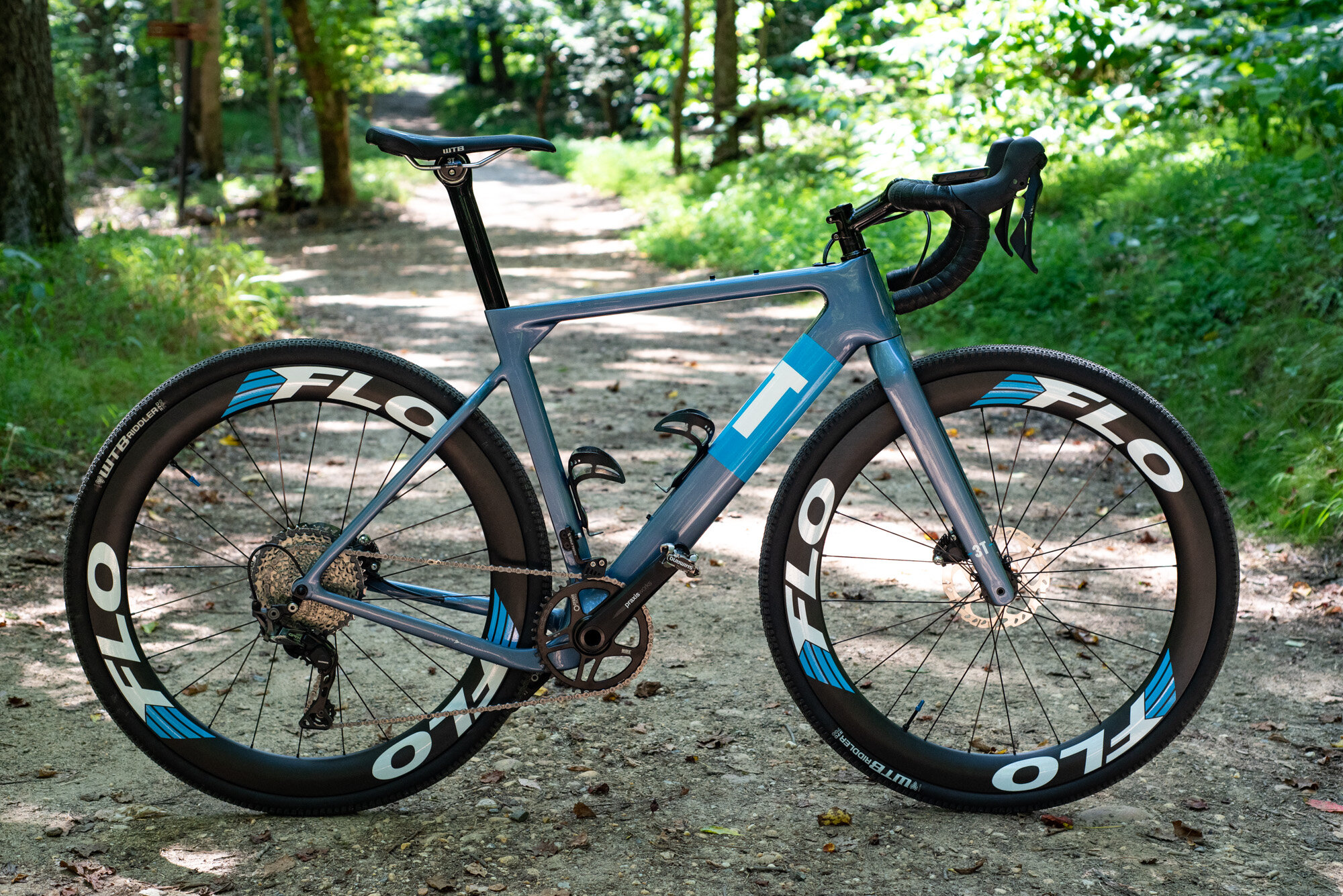
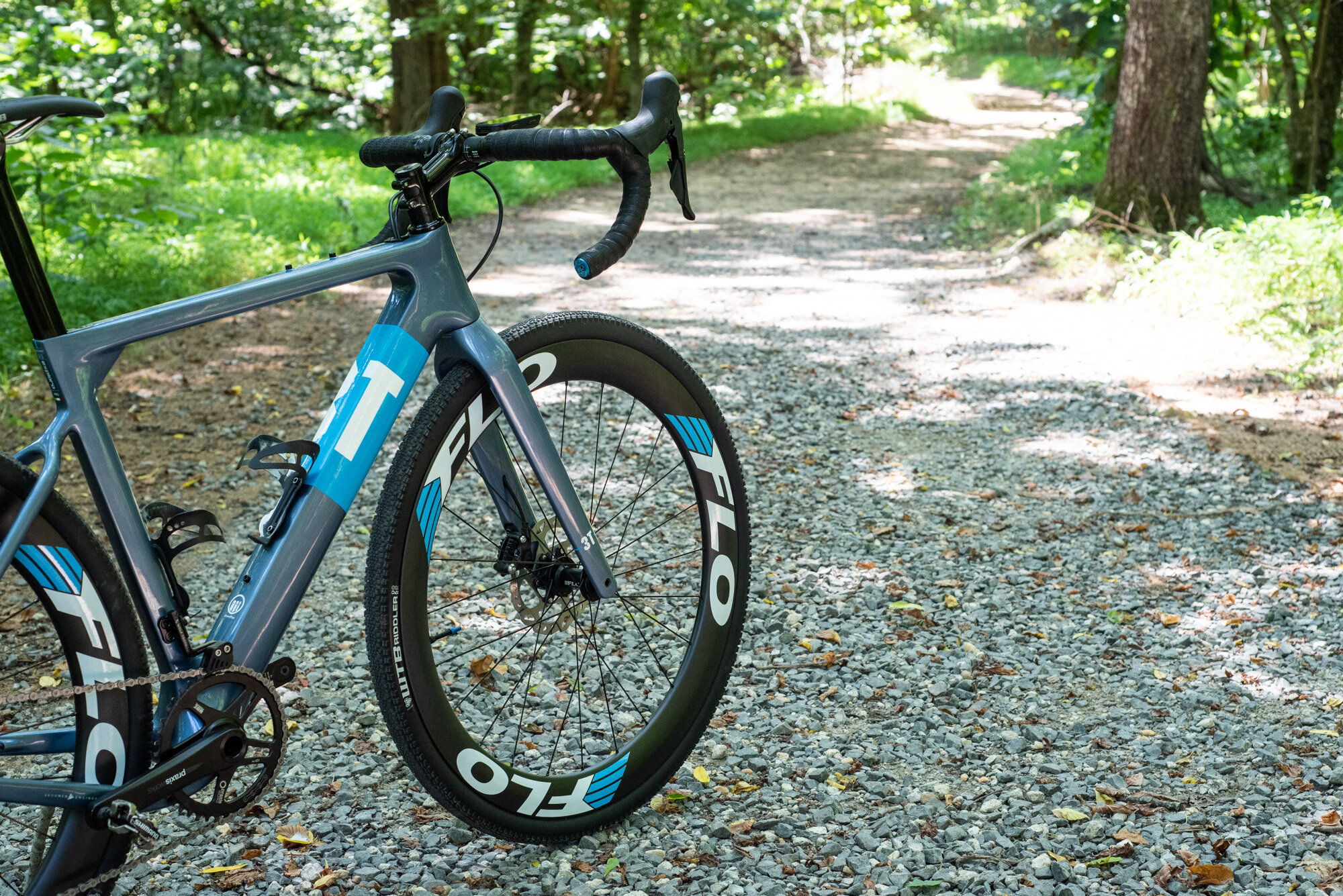
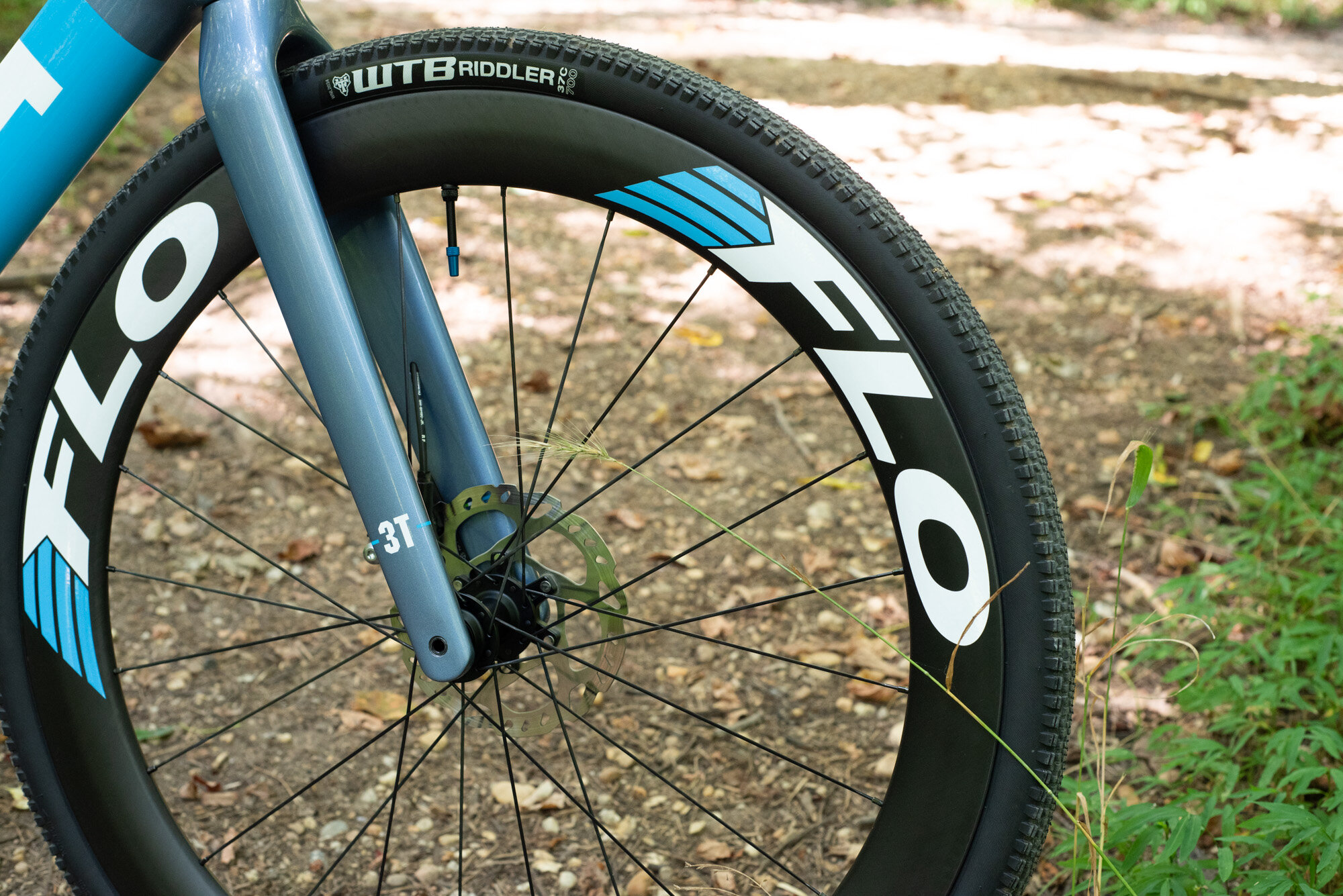
When you listen to the design journey undertaken by FLO to create these wheels, you will come to understand that the speed you get is based on two key areas; aerodynamics and rolling resistance. Not only was the rim profile optimized for aerodynamics, but a second key factor in their model comes in the form of rolling resistance. Tons of data and optimization modeling subsequently drove the development of this wheelset. I’m no engineer, but I’ll briefly try to break down some key design elements in layman’s terms, as I mention my observations from riding on gravel.
The first place where you can see the rolling resistance optimization is with the wider rim profile, translating into incredible stability, comfort and confidence while cornering. The wider profile also allows for running much lower tire pressures. The science behind this comes from the fact that FLO, in their data collection, observed how a wider rim profile artificially increases the chasing tension of a tire. What this should tell you is that even at lower pressures you don’t get that soft, spongy feeling you normally get when tire pressures are set too low. It was seriously impressive to experience such a responsive ride-feel, even as I set the tire pressure to levels as low as 30psi.
Getting to the correct tire pressure wasn’t a guessing game either. FLO provides a very useful look-up table on their site that can help you dial in the correct tire pressure. One small detail to note is that you should use the width of the tire after inflated. In other words, don’t assume that a 40mm tire (as stated on the sidewall) will actually measure 40mm once inflated. This is what 3T refers to as WAM (width as measured). My WTB 40mm Nano tires actually measured in at 43mm once inflated, and this in turn meant that I had to lower my pressure even more. FLO’s guide recommended that I run 35psi on packed gravel and pavement and 30psi on course gravel. To a pure roadie (who until a few years ago still jammed 125psi into a 23mm road tire) these kind of tire pressures just sound nuts.
FLO’s tire pressure guide was spot on for my set-up. At first, I couldn’t believe that the pressure should be set that low and I tried to overwrite their recommendations with what I normally run. It didn’t take long during my first ride to realize that the tires were way too hard and I stopped to let out some air. Since that moment, I’ve been following FLO’s guide to the T, and it’s made a massive difference to the ride quality. Rough, course gravel felt incredibly comfortable to ride over. Simply put, it felt like I was floating over the crunchy stuff.
When it comes to having such a smooth ride, there is of course, some science that can help determine the correct tire pressure. We all know that feeling of “bouncing around” on gravel whenever our tires are pumped too hard. When this happens, you waste valuable energy moving up & down, instead of propelling yourself forward. FLO has a much more educated term for what I describe as “bouncing around” and it’s called the impedance breakpoint. Their data collection essentially allowed them to determine what the optimal tire pressure should be to keep the rider and bike in constant contact with the ground, which then allows for optimized rolling resistance. The tire pressure guide that you’ll find on the website is based on all this data and research.
At the end of the day, all the science works together in the background to deliver a ride quality on gravel unlike anything I’ve ever experienced. It’s fast, zippy, stable and comfortable all at once. This wheelset truly delivers, and certainly ticks the boxes for what I want in a gravel wheelset. Not everyone will have the same requirements, but if you are looking for a wheelset that provides incredible speed, yet also a solid and comfortable ride, then the FLO G700s are definitely worth the look.
Road Performance
I want to get back to what I mentioned at the outset of this post and talk about my wish-list for a great wheelset. My requirements for a true all-round wheelset was that it should not only perform on gravel, but should be equally capable of handling the road. Bonus points if that performance could be achieved without the need to constantly change from gravel tires to road tires. So how did the FLO wheels perform in this regard? I was totally blown away by the performance of this wheelset when using it on the road. I was hoping that the wheels would be fast, but these wheels are FAST!
I was seriously impressed after one particular ride, which really highlighted the capabilities of the FLO G700 wheels. I started the ride off with a spin through a local park, a stretch that consisted of gravel fire roads and even a handful of chunky gravel trails. The remainder of that ride was mostly on pavement and that’s when the ride really left its impression on me. I was able to challenge Strava KOMs on the road, with a gravel bike, fitted with 40mm gravel tires – pumped to only 35psi. Mind-blowing! I’m not talking about some random short segments either. These were segments well over a mile in length that normally require near perfect performance to get anywhere close to the KOM times. I can already hear the nay-sayers as they look for other variables to explain this type of performance. No, there was no tail wind. In fact, it was a crazy warm afternoon (36C/97F) with lots of humidity. It simply came down to a wheelset that was delivering incredible speed on the road, even when fitted with wide gravel tires. Now that is what I consider true all-round performance!

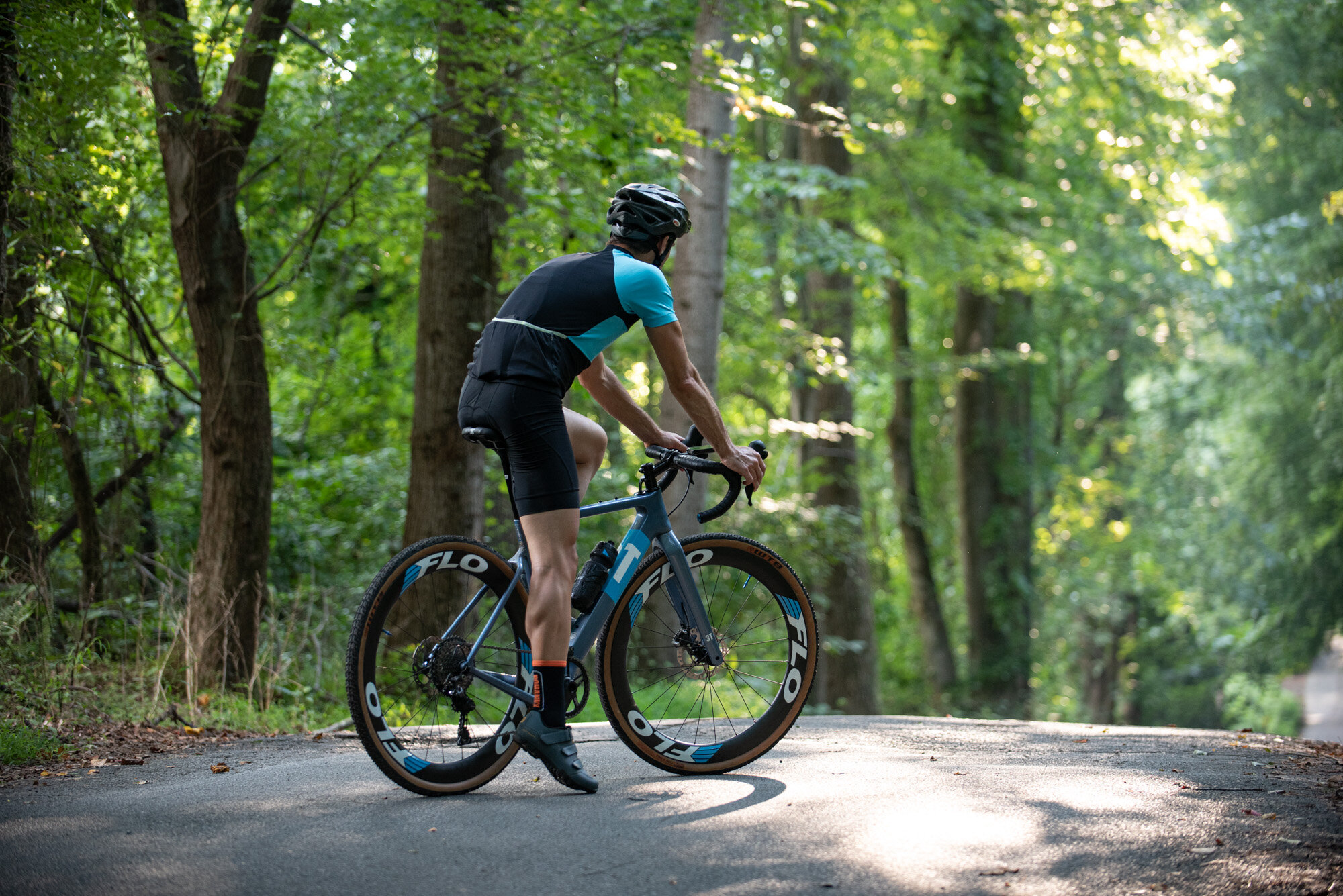
Next, I want to come back to what I highlighted in the specification section of this review - the weight. As shown in my comparison table, the FLO G700s do come with some additional weight when compared to other wheels. What I found during my testing was that this additional weight can actually be used in one’s favor, if the correct pedaling style is applied. What do I mean by “correct pedaling style?” It all comes down to maintaining the correct cadence that syncs up with the natural inertia from the wheels. Ask any time trial specialist or even some triathletes and they’ll be able to tell you how important it is to maintain the correct rhythm or cadence that matches up with the natural push from the wheel’s weight. Think of a solid disc wheel as an example. This type of wheel normally weigh in a bit heavier, but when ridden correctly, provides massive speed benefits due to the way it helps push the rider forward. To some extent, the same holds true with a deeper aero wheelset like the G700s. Once I tuned into this observation and learned to work with the inertia of the wheels, I immediate saw improvements with the speeds that I could maintain, especially while riding on the road.
My key take-away from the road riding performance testing is that this wheelset truly delivers exceptional performance, but it’s also a wheelset that demands performance. Ride it correctly and you’ll be richly rewarded. Next we’ll take a look at how it performed on the climbs.
Climbing Performance
Gravel riding is well-known for its short and sometimes very steep hills. It’s not uncommon to spend a good portion of a gravel ride out of the saddle rocking side-to-side up a steep hill climb or grinding away up a long hill in your easiest gear. Climbing was the one area where I initially had my doubts about the FLO G700 wheels. I figured that the weight would surely be a limiting factor when it comes to riding up steep hills.
What I found was that they actually performed much better than what I had anticipated. In fact, the wheels suited my style of riding really well. I prefer to spin at a much higher cadence (95-105rpm) when going up short and steep hills. I also tend to accelerate into hills and then maintain that speed and higher cadence all the way to the top of a climb. This style ties back to what I mentioned in the Road Performance section about using the weight of the wheels to your advantage. When climbs were shorter and allowed for my accelerations to be maintained, I could still easily sync up with the rhythm of the wheels and reach the top quickly.
Longer, more gradual climbs as well as short steep climbs allowed me to maintain the correct momentum and use the wheel’s weight to my advantage. The only time when I felt the weight work against me was when the gradient of a hill suddenly spiked. In those instances, I simply lost all momentum and my cadence dropped substantially. When grinding away at 50-70rpm, I no longer felt like I was riding as efficiently as I would like to. Once I maxed out my gears and the momentum in my pedaling got lost, the going was certainly harder given the additional weight of the wheels.
Another observation on the climbs was the amount of stiffness that I felt when rocking from side-to-side while climbing out of the saddle. In the past, while climbing with other wheelsets, I’ve had the experience where the flex from the wheels would cause the disc rotors to rub slightly. The G700s did not have similar issues. FLO’s wheels felt solid beneath me and really created a sense of confidence that I could push harder on the pedals. This enhanced confidence in the wheels also went a long way when beginning a descent following the climb.
Wrap-up
I thoroughly enjoyed having the FLO G700 wheels on my bike and I’ll certainly miss the mind-blowing performance that I was able to squeeze out of my gravel bike. I can, nonetheless, see how this wheelset might not appeal to everyone. This is a wheelset aimed at the performance-oriented gravel racer and as such hits a very niche part of the gravel market, a part that I think will continue to grow as the sport develops. Don’t get me wrong, having an aerodynamic and rolling resistance optimized wheelset will surely be beneficial no matter how/where you choose to ride it and these wheels are certainly suitable for the every day rider, but you’ll most likely not be utilizing the full potential of the wheels when cruising along at a leisurely pace.
The FLO G700 wheels provided exceptional all-round performance no matter the terrain. The wider rim profile delivered a smooth, stable and comfortable ride, unlike anything I’ve experienced before. FLO’s approach to optimize both aerodynamics and rolling resistance really delivered a wheelset that carves out its own unique space within the gravel wheel market and I suspect it won’t take long before others will follow. As someone who transitioned from road cycling and triathlon into gravel, this wheelset just about met all my requirements for a true all-round performance wheelset. I would love to see a slightly lighter version of this wheelset in the future, but as it stands the FLO G700s can easily contend with wheels that cost almost twice as much. Exceptional performance and value for money, now that is a product I will gladly assign my seal of approval!



